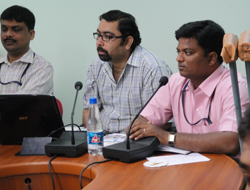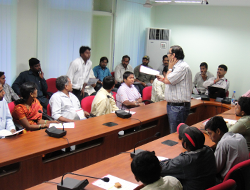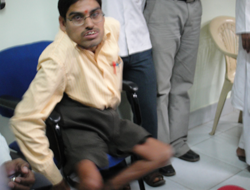The problem of disability is gaining more and more importance all over the world. The planners of India very well understand the significance of the problem. The government of India and also state governments have framed various policies for persons with physical disabilities: reservation jobs, concession facilities in traveling, special training institutions etc. At the same time there is a network of NGOs working for the development of persons with physical disabilities.
Statistics:
Physically disabled population in India:
Number of disabled in each type of disabilities is depicted in table below, which shows total number of disabled in India as 21,906,769 which constitute more than 2 percent of total population.
Disabled in India by types of disability:
| Types of Disability | Number of Disabled | Percentage |
|---|---|---|
| Sight | 10,634,881 | 48.55% |
| Speech | 1,640,868 | 7.49% |
| Hearing | 1,261,722 | 5.76% |
| Movement | 6,105,477 | 27.87% |
| Mental | 2,263,821 | 10.33% |
| Total | 21,906,769 | 100.00% |
Source: Census of India 2001
The total work participation rate among disabled is 34.49% and 29.55% among males and females respectively. The work participation rate is low among females as compared to males and in urban areas as compared to rural/urban areas. Lack of education and employment opportunities for mentally disabled along with negative attitude of the employer to employ mentally disabled are reasons for this trend.
Challenges of Differently Able:
Lack of proper training, job information and overall social acceptance are the main challenges faced by the physically disabled people. They are part of poverty as majority of them stay in rural/urban/semi-urban areas; hence, migration also becomes a challenge for them. These people are never considered to be in the mainstream although few corporate like Shakthi Masala, Tata-owned VSNL and IBM believe that they are differently able and provide suitable job training. The differently able people do have skills or can develop certain skills and specific jobs, which can suit their ability, can be provided for them.
The major barrier to employment by the people with disabilities in our society continues to be attitudinal barriers; stereotypical thinking and assumption about what people with disabilities can and can't do. The greatest benefit of the active participation of disabled people in mainstream activities of the society, however, is the improvement in the quality of their lives that cannot be calculated in monetary terms. They are a marginalized population of the country; disability and poverty are inter-connected and only 1% of physically challenged Indians are able to get a better job.




Our Impact:
1. NaukriSMS strives to include and bring the physically challenged people to mainstream and provide them skills/employment information.
2. NaukriSMS finds out from Skill Trainers and Employers on Skills/Jobs that Differently abled people can acquire or do and caters their need as per the Industries in the demography.
3. This would enable the differently abled and employers with help of specialized skill development partner build an eco-system, which is conducive for this segment. Information access is critical for building and spreading the eco-system.
4. The identified jobs may not require travel or reaching out to traditional work locations, even if the jobs are at work locations, then only employers who provide such facility and work would be the published jobs to the differently able.










